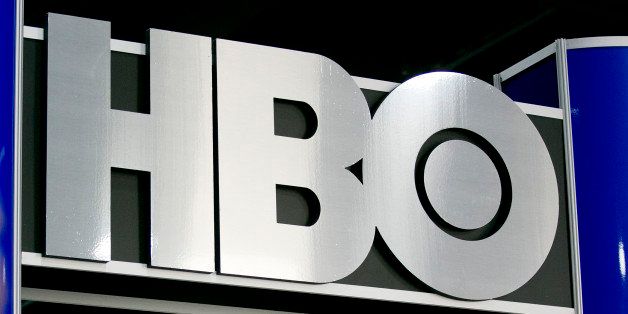
A market research firm is backing down from its widely circulated report claiming that HBO and other premium TV providers lost subscribers over the last two years while Netflix gained.
NPD Group removed the press release from its website and issued a "data clarification" statement on Wednesday that said it "should not have called out declines in subscribers for specific premium TV channels, HBO and Showtime."
"The data used for the press release pertains to aggregate results for all premium TV channels and does indicate that the overall number of subscribers has declined, based on a representative sample of the U.S. population," NPD said in a statement to The Huffington Post. "However, upon further examination of the results, there is data supporting the conclusion that individual subscribers are either subscribing to more channels, or adding channels over time."
Basically, NPD group says that fewer households are subscribing overall, but those households that are subscribing are subscribing to more premium channels.
"The universe of overall premium channel subscribers is shrinking, but the subscribers that are sticking with premium TV are taking on more channels," Russ Crupnick, senior vice president of industry analysis at NPD Group, told The Huffington Post. "You do have a lot of consumers who are staying in premium TV and bulking up on the number of channels they're subscribing to."
An NPD Group spokesman said that the company would issue a corrected press release this week.
HBO and other premium TV providers aggressively disputed the original NPD report after it came out on Monday.
"The research is simply incorrect," HBO said in a statement to The Huffington Post.
Rich Greenfield, a prominent media analyst (who, coincidentally, co-hosted Netflix's earnings call with investors on Wednesday), jumped in on Tuesday evening to discredit the report. In a blog post, Greenfield called the claim "100 percent false."
"We believe premium growth has been quite healthy, with absolute premium subscribers now at an all-time high driven by improving quality of content," Greenfield wrote.
NPD Group's original report was picked up by many news outlets, including The Huffington Post.
NPD surveyed four waves of more than 7,000 consumers -- in March and August 2012, and during the same two months in 2013 -- and reported that over the last two years, the overall percentage of households that subscribe to premium TV channels declined by 6 percentage points. At the same time, the percentage of households that subscribe to streaming services like Netflix, Hulu Plus and Amazon Prime Instant Video, increased by 4 percentage points.
NPD also said the number of subscriptions has decreased, writing that "subscriptions to HBO, Showtime and other premium TV channels have declined over the past two years, as Netflix and other subscription video-on-demand (SVOD) services have gained in popularity."
Yet HBO said that both HBO and Cinemax "have shown significant domestic subscriber growth in the past two years."
HBO and Cinemax added a total of 1.9 million combined domestic subscribers in 2012, Jeffrey L. Bewkes, the CEO of Time Warner, HBO's parent company, said in an earnings call last year. This number includes so-called churn -- people who've cancelled their subscriptions.
Showtime, for its part, said in a statement to HuffPost that NPD's study "does not accurately reflect actual subscriber counts." The company cited figures from SNL Kagan, the media research firm, that said Showtime grew by 1.5 million subscribers from March 2012 to September 2013.
Starz grew from 20.1 million subscribers in March 2012 to 22 million in September 2013, while its sister channel Encore grew from 33.6 million to 35 million over the same period.
Data from SNL Kagan backs up the networks' claims. HBO, Cinemax, Showtime, Starz and EPIX all have increased their total subscriber counts in the last two years, according to SNL Kagan. And the percentage of households in the U.S. with premium TV subscriptions actually increased from the first quarter of 2012 to the third quarter of last year, according to SNL Kagan.
Netflix is also thriving. Subscriptions have surged over the last couple of years, jumping to more than 31.7 million in the fourth quarter of 2013 from 22.02 million in the first quarter of 2012.
Analysts said the reason people keep shelling out big bucks for premium TV is simple: There's really good stuff to watch.
"Content is king. Period. End of report," said Jim Nail, principal analyst at Forrester, the information and technology research firm. "Most of Netflix is still old movies [and] past seasons of TV shows, and while that has a certain degree of quality, it's certainly not a full substitute for the latest episode of 'Boardwalk Empire' or 'Game of Thrones.'"
Full statement from NPD Group:
A recent press announcement from The NPD Group that was released on Monday, January 20, 2014 (“Cord Shaving? SVOD Subscribers Increase, as Premium TV Subscribers Decline, According to The NPD Group”) should not have called out declines in subscribers for specific premium TV channels, HBO and Showtime. The data used for the press release pertains to aggregate results for all premium TV channels and does indicate that the overall number of subscribers has declined, based on a representative sample of the U.S. population. However, upon further examination of the results, there is data supporting the conclusion that individual subscribers are either subscribing to more channels, or adding channels over time. In that case, faithful premium channel subscribers are becoming more so – which would be consistent with the subscription increases being reported by individual channels.